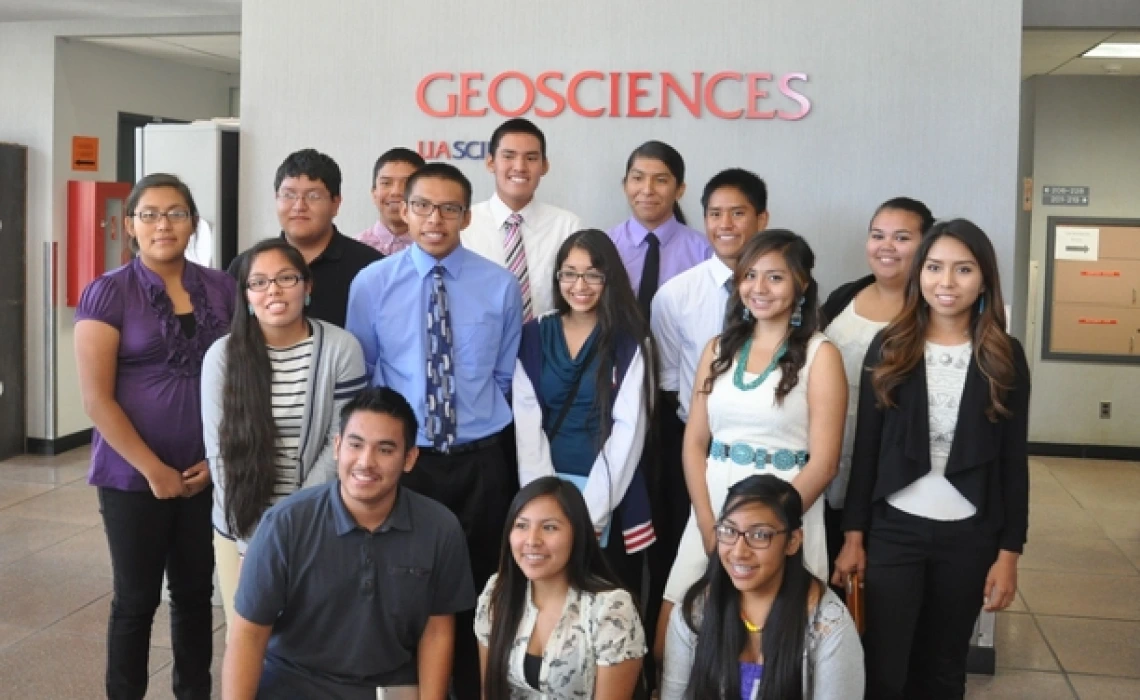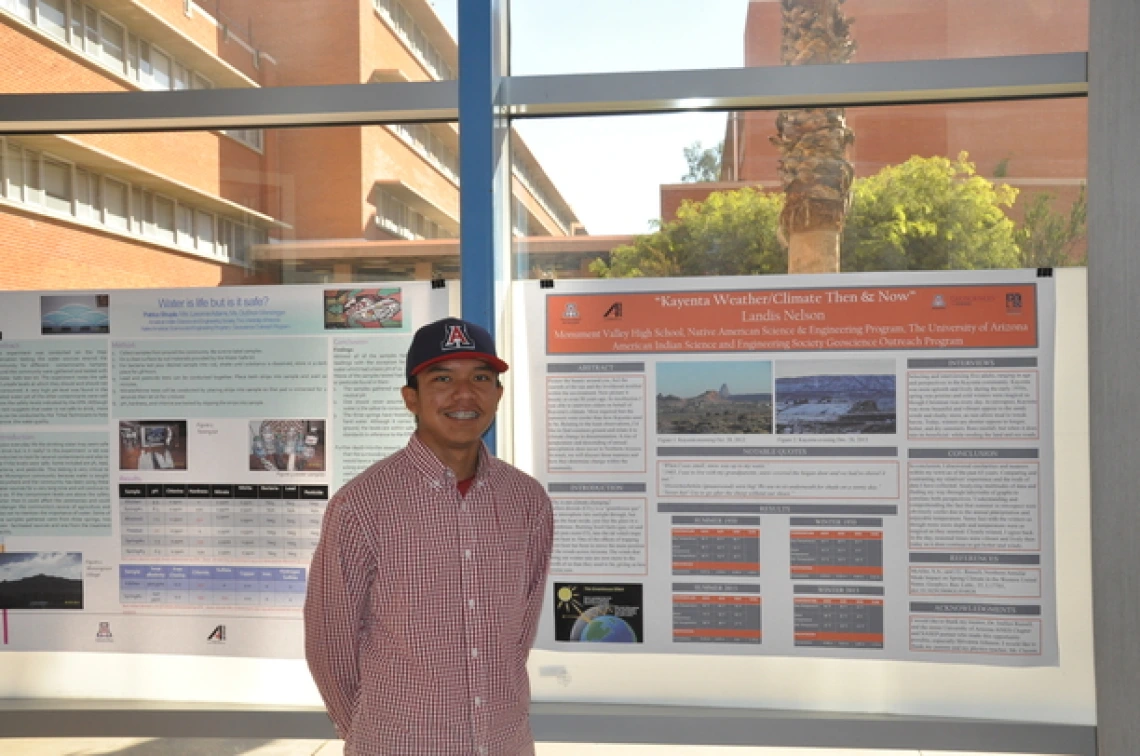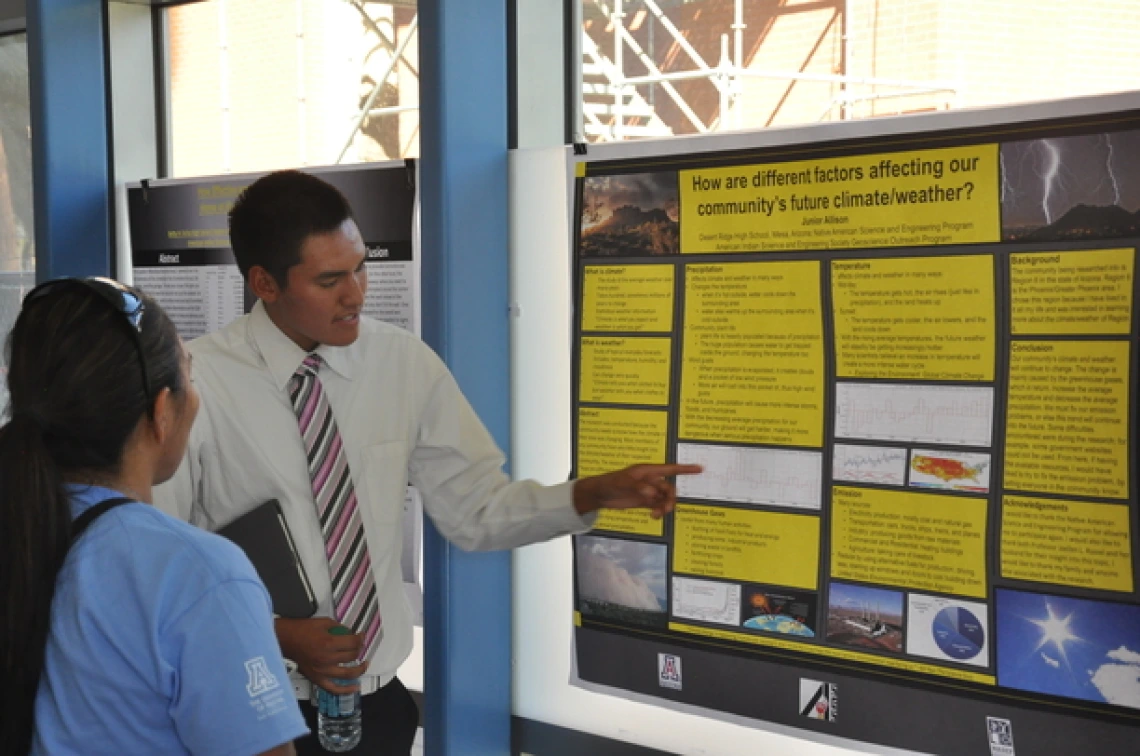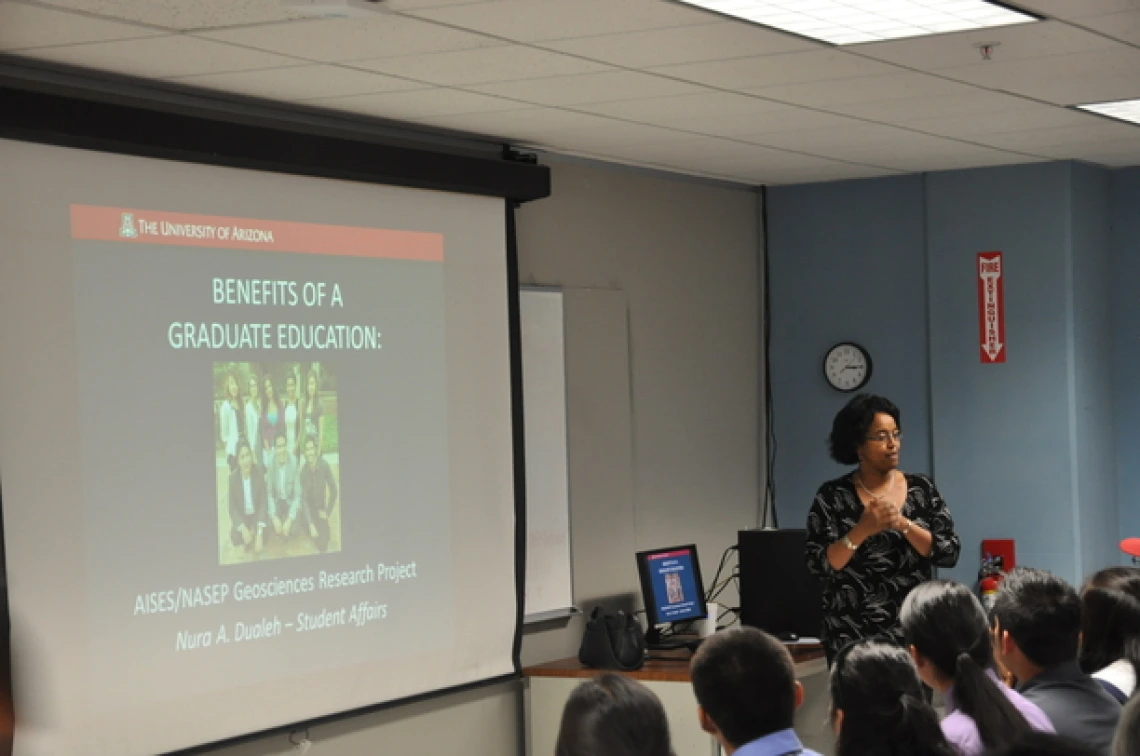Arizona, New Mexico Students Participate in Research at UA
Through a research project coordinated by UA partners, promising juniors and seniors from Arizona and New Mexico have been involved in a research project that is promoting the science, technology, engineering and math (STEM) fields.
The UA chapter of American Indian Science and Engineering Society (AISES) and the Native American Science and Engineering Program (NASEP) then sponsored a weekend event, the AISES Geoscience Outreach Project, for 19 students to share their work.

A group of American Indian students, who have been investigating issues related to water, pollution and climate in their home communities under a UA project presented their research on campus.
In an earlier phase of the project, high school juniors and seniors were split into three groups focusing on water quality, light pollution and also weather and climate. Mentors from the UA, the U.S. Geological Survey and the National Optical Astronomy Observatory then showed each group how to collect a variety of data so that they could analyze reliable results as part of the project.
Once students developed a specific question about their research topic, they ventured into their communities to take measurements and gather data in an attempt to answer those questions. Furthermore, students also pored through electronic databases in order to find the information they needed.

Landis Nelson, a NASEP participant, presents on weather and climate at the beginning of the day. Nelson was recognized for his presentation, which stemmed from elders’ remarks about climate change.
The project, supported by the UA Office of Early Academic Outreach (EAO), in its initial phase enabled students to develop a specific question about their research topic, then venture into their communities with scientific equipment to take measurements and gather data in an attempt to answer those questions. Tools like pH meters, testing strips and powder to detect bacteria growth were given to the water quality group. The light pollution group utilized iPad apps provided and paid for by the National Optical Astronomy Observatory (NOAO) so that acute detections of light levels from different types of bulbs could be recorded. The data collected with the help of the equipment given provided students with answers to many questions that they formed.
Also, students pored through electronic databases in order to find the information they needed. After learning how to collect the necessary data, each group member interviewed community members about the topic that they were assigned, and from these interviews, students were tasked with independently identifying unique research questions and hypotheses that focused on their communities.

Junior Allison, a NASEP participant, presents to an AISES member about the various factors that affect climate and weather.
Over the weekend, students arrived at the UA to present their research.
Eventually, students presented their research posters to a panel of judges, including members of EAO, the Environmental Research Lab, the College of Agriculture and Life Sciences the UA AISES chapter and NOAO.
Subtopics for each of the presenters ranged from the quality of light coming from residential fixtures to the change of temperature and precipitation in their local community over time. Shandel Mariano, a water quality group member focused her research on a topic often vocalized by her peers in school.

Students received certificates for participation and awards for their research projects. Patrice Shupla was the winner of the water quality group, having compared water quality in different areas in her community.
Students and their families also had the chance speak with University researchers and staff.
One speaker, Nathaniel Dominguez, a former participant in the NASEP program and a UA freshman, provided students and family members with information relevant for ensuring a smooth transition from high school to higher education. Also, Erin Deely, a senior program coordinator for the UA College of Science, spoke to parents, providing information about how to best helps prepare students for academic studies. Deely emphasized the quality of the science programs at the UA, noting that many were recognized as among the top in the nation.

Nura Dualeh, program director for the UA's Strategic Student Initiatives, encouraged students to consider a wide range of options in their studies, and also imparted many strategies that students could utilize in order to be successful overall.
In this way, NASEP’s partnership with AISES is helping EAO in its mission to increase the number of low income, minority and first-generation college-bound students who aspire to gain a higher education degree.
"The UA AISES chapter was fortunate to partner and collaborate with a variety of UA departments and colleges, as well as professional AISES chapters," said Shivanna Johnson, a UA AISES member and EAO graduate assistant. "I'm very proud of the effort put forth by the AISES UA chapter, and very grateful for the support of UA departments and staff who all contributed to this project."
Photos courtesy of Ace Charette
Contact: Ace Charette, the NASEP coordinator, at 520-626-2300

